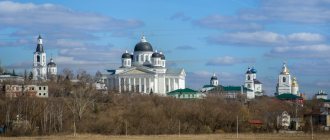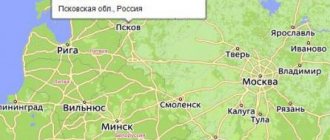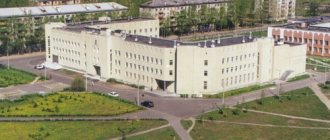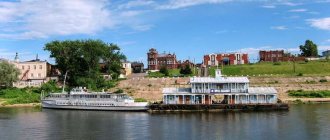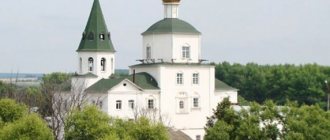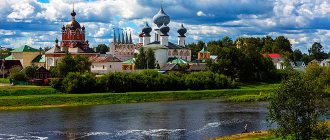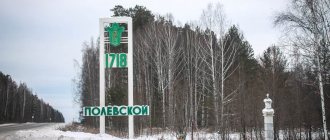For the first time we read about the city of Balakhna in a chronicle in 1536: after the attack of the Kazan Khan Safa-Girey on the salt workers’ village, the settlement was protected by a wood-earth fortress. It is unknown what source the learned compilers of the “Encyclopedic Dictionary of Brockhaus and Efron” used at the end of the 19th century, designating the year of Balakhna’s birth as 1474—then the exiled Novgorodians found the Balakhna Usolye.
Salt replenished the reserves of the royal treasury; serving people received their salaries with salt. Balakhna was engaged in salt production until the beginning of the 19th century.
Peter I had high hopes for the Balakhna shipyards. At the beginning of the 18th century, Balakhna was the main center of shipbuilding on the Volga. A century later, the history of the production of steamships, and later motor ships, began. And at the beginning of the 20th century, the last wooden barge was built in Balakhna.
Another craft of the Balakhna woodcarving masters - the art of making tiles - has also sunk into oblivion. And once upon a time, wooden forms for decorating Moscow itself were ordered from Balakhna.
For 200 years, Balakhna delighted with its airy lace; now only a few craftswomen keep the secrets.
The formation of modern industry began with the construction of the Nizhny Novgorod State District Power Plant, a pulp and paper mill and a cardboard factory.
The names of rare masters of the past have been preserved by time, but one name of a local native, awarded with organizational talent, is still glorified by the Russian people today - Kuzma Minin, a man with a king in his head.
Balakhna
Entrance to the city from Nizhny Novgorod Entrance to the city from the Trans-Volga region
My roots connect me with Balakhna. My ancestors are from Balakhna, I was baptized in the Sretenskaya Church. And on Komsomolskaya Square there is a memorial where there is an inscription Ozhigin P.A. - this is my great-grandfather (who went missing near Stalingrad during the Great Patriotic War)
• The Balakhna Chronicle is full of events, like a thick solution of salt. It is no coincidence that, along with Gorodets and Arzamas, it is included in the list of the first hundred historically valuable cities in Russia. Balakhna has long been famous for its salt mining. The original name of the settlement sounded like “Salt on Gorodets”. Balakhna Usolye in the 15th-16th centuries was known throughout the Russian state.
Since 1474, the settlement of Balakhna was given the status of a city. By decree of Elena Glinskaya, mother of Ivan the Terrible, the Balakhninskaya fortress was built in 1563. And in 1552, Tsar Ivan IV the Terrible visited our city. In the memory of descendants, the Balakhna shipyard is associated with the activities of Peter the Great in the formation of the domestic fleet. Here ships were cut for the Azov campaign of 1695, and, later, in 1722, to replenish the Baltic Fleet with auxiliary ships. Balakhna shipbuilders were considered unsurpassed masters of construction, beauty and strength. For Catherine II's journey along the Volga in 1767, craftsmen created the Tver galley.
In Balakhna, bricks and glazed colored tiles were fired. The famous Balakhna tiles shine on St. Basil's Cathedral and decorate the Faceted Chamber of the Moscow Kremlin.
You can’t ignore Balakhna lace. They were superior in quality and variety of designs to Belgian lace. Every year, through the Nizhny Novgorod Fair, Balakhna lace was sent to Paris, Vienna, London, New York, and China. Balakhna is also famous for bobbin lace making. The city developed the “Balakhna style” of lace weaving, which was based on the multi-pair technique. Preserving ancient traditions, Balakhna masters and craftswomen are still famous for their products - the famous Balakhna lace.
Balakhna was also honored by the past, twentieth century, with a unique paper mill - a manufacturer of products for the publication of the country's main newspapers. In 1925, the Gorkovskaya State District Power Plant began its work. The cardboard plant produced its first products in 1928.
Monument to Kuzma Minin But the highest pride and glory of the city is its native Kuzma Minin, named in ancient years as the first citizen of Russia, and this alone gives Balakhna the right to occupy the brightest page of national history, dedicated to the heroism of our people. Throughout the history of their city, Balakhnin residents were active defenders of the Russian land. They also contributed to the victory of the Soviet people over fascism. Balakhna gave the homeland seven heroes of the Soviet Union, of which the title of twice hero was awarded to Lieutenant General of Aviation V.G. Ryazanov
• The city was founded in 1474 under the name Sol-na-Gorodets. After the Kazan Khan razed it to the ground in 1536, a wooden fortress was built to protect against Tatar raids. In the Middle Ages, the city was a significant center of the salt industry and the administrative center of the Balakhninsky district. Balakhna is the birthplace of Kuzma Minin, the organizer of the Nizhny Novgorod militia of 1611-1612. In 1714, Balakhna became part of the Nizhny Novgorod province as a district town. In the 18th-19th centuries the city was an important shipbuilding center. In 1925, the Nizhny Novgorod State District Power Plant, operating on peat, came into operation, and in 1928 the pulp and paper mill and cardboard factory produced their first products. (Wikipedia)
• In the 17th century, B. became a district center and was one of the largest cities. Of the 254 cities of the Russian state. In terms of the number of households, B. was in 12th place and only half inferior to N.N. (1066 households) 1671 - there were households :
• Balakhna – 514 • Simbirsk – 510 • Kazan – 310 • Oryol – 80
In 1478, Ivan III conquered Veliky Novgorod. According to popular legend, it was the exiled Novgorodians who began the intensive development of salt springs in Balakhna. The salt production was in the hands of feudal lords and merchants. Among the owners were Bal. salty brewhouses are mentioned: Moscow Church, Trinity-Sergeevsky Monastery, Pokrovsky Monastery. In its heyday, production reached a million poods. Salt was transported in ships along the Volga and Oka. At the end of the 17th and beginning of the 18th century, the salt production in Balakhna began to decline. And by the end of the 18th century it almost stopped. Balakhna salt could not withstand the competition with Perm and Elton salt. The salt production was in the hands of feudal lords and merchants. Mentioned among the owners of the Balakhna salt pans are: the Moscow Tsar, the Trinity-Sergievsky and Pokrovsky monasteries, the boyar Vorotynsky. During its heyday, production reached a million poods
Salt was very expensive, so there were ancient Russian weights: 1 berkovets = 10 pudam = 163.8 kg 1 pud = 40 pounds = 16.38 kg 1 pound = 96 spools = 0.409 kg 1 spool = 96 shares = 4.26 g There were proverbs about weight measures: “In price one is free, but in weight one is not free” “The price is one’s own, but the scales are the sovereign’s” “Weight and measure, then so is faith” “Weight and measure will not be allowed to sin” Mom told me that, being As a schoolgirl, she saw the remains of salt wells on the banks of the Volga River. For the first time in Russian chronicles, Balakhna was mentioned in 1536 “by order of the great sovereign Ivan Vasilyevich of All Rus' and his mother, the great empress Elena, the city was founded by God’s mercy…………..for the sake of the fact that the settlement is large and there are many people” (complete collection of Russian chronicles vol. 29 page 24)
Balakhna was famous for its shipbuilding. In 1636, Balakhna shipbuilders took part in the construction, by order of the Holstein embassy going to Persia, of one of the largest ships of that time, the Friedrich. It was the first ship built in Russia.
During the reign of Peter I, Balakhna was one of the centers of ship construction. In Balakhna, by order of Peter I, ships were built for the Azov campaign. In 1699, he called craftsmen to Balakhna to teach shipbuilding of military sailing ships. (Balakhna Museum of Local Lore)
Balakhna
, city in the Russian Federation, Nizhny Novgorod region, pier on the river. Volga (Cheboksary Reservoir). Railroad station. 31 thousand inhabitants (1992). GRES. Pulp and cardboard mill. Museum of Local Lore. Founded in 1474. Near Balakhna - Balakhna pulp and paper mill.
Balakhna Culture
(in archaeology), the Neolithic era (late 4th - 3rd millennium BC) in Wed. Volga region. Named after the site near the town of Balakhna. Settlements of 3-4 semi-dugouts with cellars and utility pits. Stone tools, ceramics. Economy: hunting, fishing. (Big Encyclopedia of Cyril and Methodius 2003)
“Be worthy of the memory of the fallen”
Near Volzhsky Park there is Komsomolskaya Square, on which an eternal flame burns. Here there are stone slabs on which the names of the heroes of the Great Patriotic War are carved, and nearby there is a monument whose heroes are a warrior and a schoolgirl. Here you can see a stele dedicated to the events of the Great War. Nearby there is a memorial plaque with portraits of war heroes engraved on it.
On the territory of Balakhna there is the Nizhny Novgorod State District Power Plant (state regional hydroelectric power station), which forms a pond and a river. Locals call this place “Warm Lake” because the water used for industrial purposes does not freeze all year round. There are many types of fish in the pond. It is very beautiful and pleasant here. This place is popular among vacationers, as the views of the untouched expanses of Balakhna are truly beautiful. “Warm Lake” is surrounded by the Pravdinsky forest - a real find for lovers of photo shoots. This is a collection of forests untouched by man. Pravdinsky Forest is one of the most beautiful places in Balakhna. There are natural paths here that allow vacationers to move freely through the forest, enjoying its beauty.
Churches
- Sretenskaya Church
The Presentation Church (1807) stands on the left bank of the Zheleznitsa River and is located in the village of Kubentsevo, which only recently became part of the city. It faces the road with its eastern altar façade. This cubic building is completed with triangular pediments on all four facades, with chapters mounted on the ridges of the eight-pitched roof. In the composition of the complicated five-domed structure, in the treatment of the walls, the shape of the windows of the church, as well as the top of the gate, vestiges of the Baroque of the mid-18th century are still felt. Small decorative drums support bulbous heads so wide that they barely fit above the roof of the building. The cornices of the pediments with crackers and other elements of classical profile are hewn out of brick, and modular and other details characteristic of the architecture of classicism are also made, which during this period were usually made of plaster and plaster casts. At the same time, there are signs of a transition to a new, more strict nature of architecture, according to which order forms are applied more consistently. The simple capitals of the pilasters, like all the details of the cornice, are carefully hewn from brick. Unfortunately, now, under thick layers of plaster and many layers of paint, their structural basis is almost invisible. This evidence of a realistic understanding of the connection between form and structure, still alive in those years among the Balakhna masons, does not reach the viewer now. A tall three-tier bell tower, built in the same style, complements the ensemble with its slender volume, surrounded by a fence with a stone gate of a clearly Baroque silhouette.
- Church of the Nativity
Not far from the Intercession Monastery you can see the heads of another 17th century monument—the Church of the Nativity of Christ. In the XVI-XVII centuries. on this site was the Nativity Convent, abolished in 1764. It is known that in 1618 there was a wooden tent church in the monastery. The hundredth charter of Balakhna in 1674 speaks of a stone monastery church, which had not yet been consecrated. Obviously, its discovery, which was completely ready at the time the inventory was compiled, took place no later than the following year, 1675. The style and nature of the execution of the cornices, window frames and other profiled brick parts are fully consistent with this date. The Church of the Nativity of Christ is built in the form of a clear cubic volume. Its walls are traditionally divided into three parts by blades, each of which ends with a zakomara. On the smooth planes of the white walls, the windows and their frames take up little space. The simple cylindrical drums end in five helmet-shaped domes covered with shiny green tiles with archaic crosses, similar to the examples of the 15th-16th centuries. The squat altar apses emphasize the height of the walls and the geometric regularity of the edges of the main volume. On three sides the church was surrounded by a one-story gallery, later turned into a closed porch. Cubic low aisles were attached to the church from the north and south. They each have one chapter, the transition to which was served by stepped tiers of kokoshniks, now hidden under an iron roof. Above the southwestern corner of the gallery stood a bell tower, which was later dismantled. Despite its relatively small size, the simple contours of the Church of the Nativity give the impression of calm grandeur, which is greatly facilitated by the contrast of its main volume with the plastically more developed, but small chapels. Both in the church and in the chapels, iconostases from the 18th century, decorated with characteristic Baroque carvings, have been preserved.
- Trinity Church
The architecture of the Trinity Cemetery Church, built in 1784, is also not typical for this time and rather resembles the forms of the early 18th century.
The church has the appearance of an octagonal tower based on a quadrangle, divided into two tiers of equal width and covered with a dome with a decorative dome. Adjacent to the church from the west is the refectory, which has a modestly crafted entrance at the end. The bell tower, which no longer exists, stood separately and also had the shape of an octagonal tower, similar in size and volume to the church. The church was built with great skill. A subtle understanding of the architectural plasticity of the wall is expressed here, for example, in the fact that the details of the window frames of the upper tier of the octagon, with a similar design, have a smaller relief than similar details of the lower tier. The brick gate leading to the Trinity Church is very colorful, with its small dome and tiled covering. Balakhna is a city founded in 1474. Along with Arzamas and Gorodets, it has the status of a historical city of the Russian Federation.
Monument to women
Where is the city of Lermontov? Caucasus, city of Lermontov: map, photo
An amazing monument is located in Balakhna, dedicated to real heroes who are often forgotten - women. The pedestal is installed at the entrance to the city so that everyone passing by can see it. This unusual monument was erected by men who paid tribute to their mothers, wives and daughters. According to the authors themselves, women need to be thanked for their work, for everything that they have to endure from men, which is why the idea arose to build such a monument. Not only those who want to repent of something come here, but also newlyweds. Another local tradition is associated with this monument - leaving change near it so that anyone in need can come here and receive a little financial help.
City `s history
The unusual name of the city is explained by several legends. One of them connects the name of the city with the order of Tsar Ivan the Terrible to issue white robes to people who worked in salt mining, the other with the presence of a large number of swamps (“balakhtin”), and the third with the fact that the development of the future city took place spontaneously: there was no Entry and exit security was established, there were no controls, which is why the saying appeared: “It’s Balakhna, the floors are wide open.”
There are several versions of the origin of the name. It is associated with the Russian words “balakhna” - “a gate, clothes or mouth, spread, spread, attributing this to negligence”: this refers to the nature of the layout of the city, which is very large in area; “balakhontse” is a section of open water in a large area: the city is located in a damp place. EM. Murzaev believes the origin of the name. Persian, from “balakhna” - upper structure, high structure. There are also opinions that the name. g. comes from the word “hoodie” - they worked in local saltworks in these clothes, from the name. R. Volkhov: the first settlers of Balakhna are exiled Novgorodians “Volokhons”. In the Middle Ages it was sometimes referred to as Usolye, Sol on Gorodets.
After the conquest of Veliky Novgorod by Ivan III in 1478, Novgorodians familiar with salt making were exiled here, which contributed to the revival of salt production. For many centuries, Balakhna was the largest salt production center, competing with salt on the Vychegda.
Balakhna is the birthplace of the patriot of the Russian land Kuzma Minin, who together with Dmitry Pozharsky at the beginning of the 17th century gathered a people’s militia that liberated Moscow from interventionists and contributed to the election of the Romanovs to the Russian throne.
Since the middle of the 17th century, Balakhna became a major shipbuilding center. Local shipbuilders built plows for the Azov campaign and participated in the construction of ships for the Holstein embassy. Ships, especially trading ships, were decorated with rich carvings. The former glory of the city is reflected in the coat of arms, which depicts two kokoros in a silver field, signifying the noble construction of the ships. Every year more than 60 different ships were launched from the Balakhna shipyard.
The famous salt industrialist and merchant of the living room of the hundred, Grigory Dobrynin, in memory of his father and brother, built a house church of the Savior in Balakhna, in Kuznechnaya Sloboda (1668-1702).
The church was richly decorated with polychrome Balakhna tiles. In the very center of the city, on the territory of the former Intercession Monastery, there is the second most ancient architectural monument of the Nizhny Novgorod region - a stone tented temple - St. Nicholas Church. It was built in 1552 in honor of the conquest of Kazan. Excellent examples of Russian architecture of the 16th and 17th centuries are the Church of the Intercession and the Church of the Nativity of Christ (1675), in which the iconostasis of the second half of the 18th century, decorated with Baroque carvings, has been preserved.
At the turn of the 17th - 18th centuries, Balakhna became one of the centers of tile production in the Russian state. Balakhna tiles decorate St. Basil's Cathedral in Moscow on Red Square. All stone buildings of the 17th century in Nizhny Novgorod were erected from Balakhna brick.
Balakhna is also famous for lace-weaving on bobbins. The city developed the “Balakhna style” of lace weaving, which was based on the multi-pair technique. The collection of Balakhna lace is in the city museum of local lore. The museum also displays icons of the 17th-19th centuries, tiles of the 16th-19th centuries, wooden sculptures of the 18th century, glass products from a local factory, an ancient sleigh, a bicycle and much more. A clock two meters in diameter is kept in the museum - a memory of the Ascension Cathedral.
The city's children's library houses a small museum dedicated to Kuzma Minin and the militia of 1612.
In Pravdinsk, which is assigned to Balakhna, there is an orphanage of culture, where Balakhna lace, wood carving are being revived, and arts and crafts are flourishing. The houses of Pravdinsk are notable for the fact that many of them are decorated with solid bas-relief carvings.
On the first Sunday of September, Balakhna celebrates City Day. On this day, townspeople remember their fellow countryman Kuzma Minin. On the main square of the city, a large theatrical event takes place, in which guests of the city are also involved; workshops of artists, carvers, potters, lacemakers, wicker weavers and whistle-makers operate.
The generosity of a local salt industrialist
Balakhna has always been a salt granary and, accordingly, gave birth to many salt industrialists, among whom was G. E. Dobrynin. He was a kind of philanthropist - with his savings he built a stone church, called Spassky, on the site where two wooden churches stood, which were burned during the Time of Troubles. Later, a column was added to the Spasskaya Church, which became the final link in the formation of the church ensemble. In the 1920s, the temple was closed due to the spread of atheistic ideology, and all the icons were taken away or sold. Soon after the war, the ensemble was restored, but only years later the Spasskaya Church was handed over to the clergy. The attraction is amazingly beautiful thanks to its unique decoration, in which the spirit of the early Baroque is felt.
Sights of Balakhna
- Museum of Local Lore
The remains of an ancient man were found on the territory of Balakhninsky district. Household items and hunting tools obtained from the excavations are stored in the museum.
Almost 400 years have passed since the Nizhny Novgorod Militia, led by the wise Kuzma Minin and the glorious Dmitry Pozharsky, liberated Moscow from the invaders. From archival documents it is known that Kuzma Kuzma Minin comes from a large family of hereditary Balakhna salt industrialists. From his hometown K. Minin moved to Nizhny Novgorod, where he was elected head of the lower settlement. It was the zemstvo elder Kuzma Minin who organized the great patriotic resistance to the Polish-Lithuanian occupiers, forming the famous “Nizhny Novgorod Militia”, headed by K. Minin and Prince D.M. Pozharsky. In 1612, Russian lands were liberated by interventionists. Every year on May 21, Balakhna celebrates the Day of Remembrance of its native Kuzma Minin.
Estate on the banks of the Volga
Perevoz (city)
The estate of the merchant Khudyakov is located on a street parallel to the Volga. Behind the sparsely forested area you can see beautiful landscapes that attract travelers. It is interesting that the lower floor of the building is built of stone, and the second floor is made of wood. The decoration of the estate is so skillful that the landmark personifies architectural completeness and aesthetic perfection. It is amazing that the interior of the estate, the stucco ceiling and floor, remained completely intact, and the external facade was successfully restored after destruction. The Khudyakov estate contains a rich history, because in Soviet times it acted as a shelter for disadvantaged children, and until 2001 it was a kindergarten. If you are planning a route of attractions and are thinking about where to go in Balakhna, go to the Khudyakov estate.
Education
- School No. 14
- School No. 6
There are about a dozen schools in the city of Balakhna. Municipal Educational Institution Secondary School No. 14 with in-depth study of individual subjects is rightfully considered one of the best schools in the region. It employs passionate professionals, some of whom have become tutors for the Intel program
- …
| Cities of the Nizhny Novgorod region |
| Arzamas | Balakhna | Bogorodsk | Bor | Vetluga | Volodarsk | Vorsma | Vyksa | Gorbatov | Gorodets | Dzerzhinsk | Zavolzhye | Knyaginino | Kstovo | Kulebaki | Lukoyanov | Lyskovo | Navashino | Nizhny Novgorod | Pavlovo | Pervomaisk | Transportation | Sarov | Semenov | Sergach | Uren | Chkalovsk | Shakhunya |
Cultural heritage site - Plotnikov's mansion
Particular attention should be paid to the mansion of the merchant of the first guild, Plotnikov. Now the building has been transferred to the museum historical complex
This is a unique attraction of the city of Balakhna. The building itself is of extraordinary value: three-story, built of massive stone, it is somewhat reminiscent of the architecture of St. Petersburg. Its façade is richly decorated with frescoes and stucco, and its arched windows are filled with decorative details. Currently, the mansion houses an archaeological museum, the exhibition of which is dedicated to primitive society, as well as animals and birds living in this region. In the museum you can see objects of pottery, leather and glassblowing. As noted earlier, Balakhna is an ancient stronghold of salt production, so in the museum you can look at various instruments that were used in salt extraction. In the halls of the second floor there is a constantly updated exhibition - these include creations of brick production and lace.
Glass workshop
Many guests of the city say that Balakhna is a city of churches, a place where you can be alone with your thoughts. Tourists claim that the city fascinates precisely with its traditional religiosity. Churches, according to vacationers, have beautiful interior paintings and ancient facades, which are always very interesting to observe. Guests of the city agree that all church ensembles are very colorful and monumental, but are in need of restoration.
Tourists are advised to visit the lace-making museum, because there you can not only look at rare samples of lace, but also purchase unique products that you like. There are especially many impressions left after a walk through Volzhsky Square: the unanimous opinion is that this is a well-groomed area where it is very pleasant to spend time. Tourists leave positive reviews about the zoo, saying that this is the only place in the city where there are attractions and you can see rare animals
According to vacationers, animals are treated with care and attention
We told you about the most attractive attractions in the city of Balakhna, photos with descriptions of which you could see above. Get ready and feel free to travel to new, interesting cities!
Fragile lace from Nizhny Novgorod region
If the extraction and production of salt can be called a trade, then weaving the finest lace is an art that has been developing in the city for centuries. Your holiday in Balakhna will be unforgettable if you visit the museum, under the roof of which are collected exhibits of lace products dating back to the eighteenth century. The “Balakhna rose” pattern is what defines lace making in Balakhna. Legend has it that the Great Empress Catherine the Second bought herself lace with this design from local craftswomen. Balakhna lace was so beautiful that the Queen of England ordered it to trim her wedding dress. Among the museum's exhibits you can find sweaters and shawls, scarves and thin tulle. The lace that was woven during the Soviet period deserves special attention. This suggests that lace making was also developed during this period. In the museum you can see wooden sculptures, household utensils, and various household exhibitions that allow you to plunge into the atmosphere of peasant life in serf Russia. You will definitely find something to see in Balakhna, in the lace-making museum.
Where the fountain sparkles
A favorite vacation spot for residents and guests of the city is Volzhsky Park, which was reconstructed several years ago. The territory of the park has been landscaped: it has bicycle paths and paved walking paths, as well as lanterns have been installed and trees that could pose a threat to vacationers have been cut down. In the center of the park there is a fountain, which has also been reconstructed. In the evening and at night, the fountain is illuminated, which creates a romantic atmosphere for walks. Volzhsky Park is located on the embankment of the Volga River, this is another advantage of it - stunning views of one of the great rivers of Russia.
According to vacationers, the park is a favorite place for walking and relaxing, as it has playgrounds, bike paths, and places where you can have a snack. From the park you can go straight down to the Volga, and in order to ride along it, you can take a boat or small boats. There is a small beach here - a suitable place to relax in Balakhna. On the banks of the Volga there is a monument to the mother and the chapel of the faithful Peter and Fevronia.
